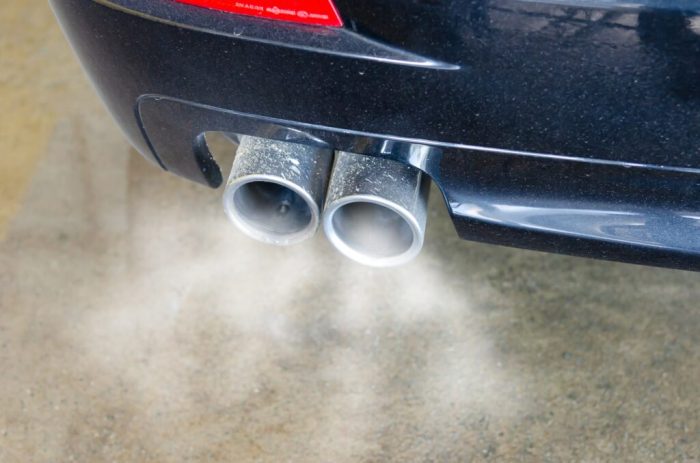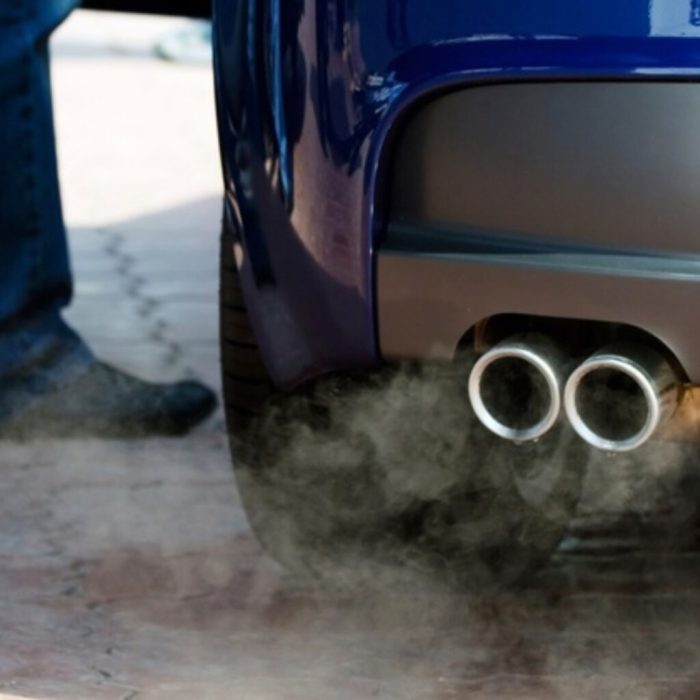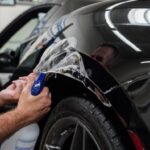How much does a smog check cost? That’s the burning question on every car owner’s mind, especially when that dreaded “check engine” light flickers on. The price can vary wildly depending on where you live, what kind of car you drive, and even the specific shop you choose. We’re diving deep into the nitty-gritty of smog check costs, exploring everything from state averages and hidden fees to finding the best deals and understanding the whole process.
This guide breaks down the factors that influence smog check prices, helping you navigate the sometimes confusing world of emissions testing. Whether you’re driving a gas-guzzling SUV or a fuel-efficient hybrid, we’ll equip you with the knowledge to get the best bang for your buck (and keep your car running smoothly!).
Average Smog Check Costs

Getting your car smog-checked is a necessary evil, especially if you live in a state with stringent emission regulations. The cost, however, can vary wildly depending on your location and the type of vehicle you drive. This section breaks down the average costs and factors influencing those costs.
Smog Check Costs by State and Vehicle Type
Smog check costs differ significantly across the US. The table below provides a general overview of average costs, keeping in mind that these are estimates and actual prices may vary based on location within the state and the specific testing facility. It’s crucial to contact local smog check centers for precise pricing. This data is based on a survey of various state DMV websites and independent smog check facilities in late 2023, and should be considered an approximation.
| State | Gasoline Vehicle | Diesel Vehicle | Hybrid Vehicle |
|---|---|---|---|
| California | $40 – $80 | $50 – $100 | $40 – $80 |
| Texas | $25 – $45 | $35 – $60 | $25 – $45 |
| Colorado | $30 – $50 | $40 – $70 | $30 – $50 |
| New York | $35 – $65 | $45 – $80 | $35 – $65 |
Factors Influencing Smog Check Costs
Several factors contribute to the variation in smog check costs across different states and even within the same state. These factors include:* State Regulations: States with stricter emission standards often have more comprehensive testing procedures, leading to higher costs. California, for example, has notoriously rigorous testing, resulting in higher prices compared to states with less stringent regulations.* Labor Costs: The cost of labor varies significantly across regions.
States with higher minimum wages or a higher cost of living will generally have higher smog check costs.* Testing Equipment: The technology used for smog testing also influences the price. More advanced and sophisticated equipment requires a higher initial investment, potentially translating to higher testing fees.* Vehicle Type: Diesel vehicles, due to their more complex emission systems, often incur higher testing costs than gasoline-powered vehicles.
Hybrid vehicles typically fall within the same range as gasoline vehicles.* Testing Facility: Independent smog check stations may have different pricing structures compared to those affiliated with dealerships or larger automotive chains. Competition and location also play a role.
Typical Cost Ranges Within States
The cost ranges provided in the table above represent a general average. However, significant variations exist within each state. For instance, in California, a basic smog check in a rural area might cost closer to the lower end of the range, while a more comprehensive test in a densely populated urban center might approach the higher end. Similarly, in Texas, smaller towns may have lower prices than major cities like Houston or Dallas.
It’s always best to call around and compare prices before committing to a specific smog check facility.
So, you’re wondering, “How much does a smog check cost?” It really varies, but sometimes a failing smog check points to bigger issues. For example, if your battery’s acting weird, you might want to check out Symptoms of a bad alternator diode because a bad alternator can totally mess with your car’s electrical system, potentially causing problems that affect your smog test results.
Ultimately, figuring out the smog check cost depends on the underlying problems, so get it checked ASAP!
Factors Affecting Smog Check Price
So, you’re wondering why that smog check cost what it did, right? The price isn’t just plucked from thin air; several factors influence the final bill. Understanding these factors can help you budget better and maybe even find a better deal.Several key elements contribute to the variability in smog check costs. These factors interact to determine the final price you pay, and it’s helpful to be aware of them before you head to the testing facility.
Vehicle Age and Type
Older vehicles often require more extensive testing than newer models. This is because older cars are more likely to have issues that need to be addressed before passing inspection. The complexity of the vehicle’s emission system also plays a role; a diesel truck, for instance, will typically have a more complex system to test than a small gasoline-powered car, leading to a potentially higher cost.
Furthermore, different states and counties may have varying requirements based on vehicle age and type, which directly impacts testing procedures and therefore the price. For example, a 1996 Honda Civic might have a simpler test than a 2018 Ford F-150, and the cost will reflect this difference in testing complexity.
Additional Fees
It’s not uncommon to encounter additional fees beyond the base smog check price. Retesting fees are a common example; if your vehicle fails the initial inspection, you’ll likely incur an extra charge for a second attempt. Many facilities also offer repair recommendations, which are often accompanied by a separate fee. These recommendations can range from minor adjustments to more extensive repairs.
Finally, some facilities may charge extra for rush service if you need your vehicle inspected quickly. These added costs can significantly impact the overall expense, so it’s essential to be aware of them beforehand. For example, a retest fee could add $30-$50 to your initial cost, while a detailed repair recommendation might add another $20-$40.
So, how much does a smog check cost? It varies wildly, depending on your location and the type of vehicle. But if you’re into DIY car stuff, keeping your tools in top shape is key – check out this guide for the Best torque wrench for DIY mechanics to help you tackle those repairs yourself.
Knowing the cost of a smog check beforehand can help you budget for unexpected car expenses, though!
Cost Variations Across Testing Facilities
The cost of a smog check can vary significantly depending on where you go. Independent shops often offer more competitive pricing compared to dealerships. Dealerships, while sometimes more convenient, may have higher overhead costs that are reflected in their smog check prices. Location also matters; smog check costs in densely populated urban areas might be higher than those in rural regions due to factors like higher rent and labor costs.
It’s always a good idea to shop around and compare prices from different facilities before committing to a specific location. For instance, an independent shop might charge $35 for a smog check, while a dealership might charge $50 or more for the same service.
Finding Affordable Smog Checks: How Much Does A Smog Check Cost?
Finding a cheap smog check doesn’t mean sacrificing quality. With a little research and savvy negotiation, you can save money without compromising your vehicle’s safety or compliance. This section Artikels strategies to locate the best deals and potentially lower your smog check costs.
Securing the most affordable smog check involves a multi-step process. By systematically comparing prices, understanding influencing factors, and employing effective negotiation techniques, you can significantly reduce the overall expense.
Online Resources for Smog Check Pricing, How much does a smog check cost?
Several websites and apps aggregate smog check prices from various facilities in your area. These online resources often include customer reviews, allowing you to compare not only prices but also the quality of service provided. Using these platforms, you can quickly identify the cheapest options near your location. For example, websites dedicated to auto repair services often list local smog check centers with their respective pricing.
Some even allow you to book appointments online. Always verify the information you find online with a phone call to confirm pricing and availability.
Negotiating Smog Check Prices
While direct price negotiation isn’t always possible, you can still leverage certain strategies. For example, inquiring about discounts for multiple vehicles or mentioning competitor pricing can sometimes sway the facility to offer a lower rate. Many smog check facilities offer discounts during off-peak hours or for senior citizens. Inquiring about these possibilities during your initial contact can potentially save you money.
Remember to be polite and respectful; a friendly approach is more likely to yield positive results. If a facility is unwilling to negotiate, consider it a data point in your search for the best price.
A Flowchart for Choosing a Smog Check Provider
The following flowchart illustrates a systematic approach to finding and choosing a smog check provider that balances cost and quality:
Start –> Use online resources (e.g., repair websites, apps) to find smog check locations and prices in your area. –> Compare prices and read customer reviews. –> Identify top 3 cheapest options with good reviews. –> Call each facility to confirm pricing and availability, inquire about discounts. –> Select the facility offering the best combination of price and customer feedback. –> Schedule an appointment. –> End
Smog Check Regulations and Requirements

Navigating the world of smog checks can feel like deciphering a complex code, especially with the varying regulations across different states and regions. Understanding these legal requirements is crucial for vehicle owners to ensure compliance and avoid hefty fines. This section will break down the key aspects of smog check regulations, focusing on vehicle types and emission standards, and the consequences of failing an inspection.Smog check regulations are primarily determined at the state level, meaning requirements can differ significantly depending on your location.
California, for example, has notoriously strict emission standards and a comprehensive smog check program, while other states may have less stringent requirements or exemptions for older vehicles. These regulations often tie into federal Clean Air Act standards, but states have considerable leeway in implementing and enforcing them. Factors like vehicle age, type, and fuel type all play a role in determining the specific requirements for a smog check.
Vehicle Types and Emission Standards
The type of vehicle you own directly impacts the smog check requirements. For instance, gasoline-powered cars, diesel vehicles, and even motorcycles will have different emission standards and testing procedures. Older vehicles may be subject to less rigorous testing than newer models, but this doesn’t mean they are exempt. Many states have different emission standards for light-duty vehicles (cars, trucks, vans) compared to heavy-duty vehicles (large trucks and buses).
These standards are often categorized by model year, reflecting advancements in emission control technology over time. For example, vehicles manufactured before a certain year might be tested for only a few pollutants, while newer vehicles might undergo more comprehensive testing encompassing a broader range of emissions. Specific details on these standards are usually available on the state’s Department of Motor Vehicles (DMV) website.
Consequences of Failing a Smog Check
Failing a smog check can lead to a variety of consequences, depending on the state and the severity of the issue. The most immediate consequence is the inability to renew your vehicle registration. This means your vehicle will be considered un-registered and driving it could result in significant fines. Beyond this, you may be required to repair the identified emission problems and undergo a retest.
These repairs can range from relatively minor fixes, such as replacing a faulty oxygen sensor, to more extensive and costly repairs, like replacing the catalytic converter. Repeated failures can lead to even stricter penalties, including potential vehicle impoundment in some jurisdictions. The cost of repairs and retesting can quickly add up, making it crucial to address any emission problems promptly.
For example, a failed smog check in California might cost hundreds of dollars in repairs and retest fees, impacting your budget significantly.
Understanding the Smog Check Process
Getting your car smog checked might seem intimidating, but the process is fairly straightforward. It’s essentially a test to ensure your vehicle’s emissions are within legal limits, protecting air quality. Think of it as a quick health checkup for your car’s exhaust system. The whole thing usually takes less than half an hour, and understanding what happens can help alleviate any anxiety.The smog check itself involves a series of tests performed on your vehicle’s emission control system.
A technician will connect specialized equipment to your car to measure the levels of pollutants in your exhaust gases. These pollutants, such as hydrocarbons, carbon monoxide, and nitrogen oxides, are byproducts of combustion. High levels indicate potential problems with your engine or emission control system. The specific tests and their requirements vary slightly depending on your vehicle’s year, make, and model, and the regulations in your state.
Smog Check Test Procedures
The technician begins by visually inspecting your vehicle’s emission system components for any obvious damage or leaks. Then, they’ll connect a device to your tailpipe to measure the levels of pollutants in your exhaust. For some vehicles, a more extensive test might be required, including a check of the on-board diagnostic (OBD) system. This system monitors various engine functions and can pinpoint potential problems.
The OBD check is often the first step, providing a quick assessment of potential issues before more in-depth testing. Finally, the technician will print out a report indicating whether your vehicle passed or failed the inspection.
Common Reasons for Failing a Smog Check and Repair Solutions
Failing a smog check can be frustrating, but understanding the common causes can help you get your car back on the road quickly. Many failures stem from relatively simple and inexpensive repairs.
- Failing Catalytic Converter: This component reduces harmful emissions. A failing converter often requires replacement, which can be costly but essential for passing the test.
- Malfunctioning Oxygen Sensor: This sensor monitors the air-fuel mixture. A faulty sensor leads to inaccurate fuel delivery, resulting in higher emissions. Replacement is usually the solution.
- Vacuum Leaks: Leaks in the vacuum system can disrupt the engine’s operation and increase emissions. Identifying and repairing these leaks often involves checking hoses and connections.
- Improperly functioning EGR (Exhaust Gas Recirculation) Valve: This valve helps reduce NOx emissions. A faulty EGR valve might need cleaning or replacement.
- Evaporative Emission System (EVAP) Leaks: These leaks allow fuel vapors to escape, contributing to emissions. Repairing EVAP system leaks typically involves replacing faulty components or sealing leaks in the fuel system.
Diagram of Components Inspected During a Smog Check
[Imagine a diagram here showing a simplified view of a car’s exhaust system. The diagram would include labeled components such as: the engine, the catalytic converter (clearly showing its location in the exhaust system), the oxygen sensor (positioned in the exhaust manifold or exhaust pipe), the exhaust gas recirculation (EGR) valve (located near the intake manifold), and the tailpipe.
Arrows could indicate the flow of exhaust gases. A small box could represent the OBD port where the diagnostic scanner is connected. The diagram should be clear and easy to understand, even without technical expertise.]
Conclusion
So, how much
-does* a smog check cost? The short answer is: it depends. But after exploring the various factors influencing the price – from your state’s regulations to the type of vehicle you own – you’re now armed with the knowledge to make informed decisions. Remember to shop around, compare prices, and understand what’s included in the cost to avoid unexpected expenses.
Happy (and legal) driving!









